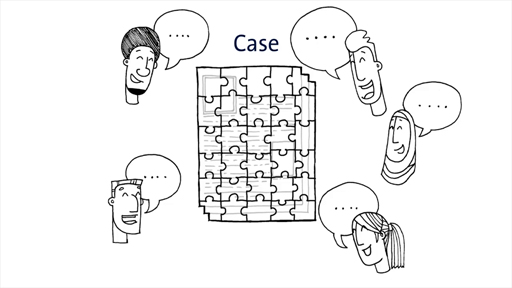2 Exploring problem-based learning (PBL)
Problem-based learning originated as a popular method of teaching in medical schools in the 1960s. The essence of the PBL approach lies in stimulating learning by actively exploring possible solutions to open-ended problems. It is considered a constructivist approach to learning, as learners construct and build their knowledge through the problem-solving process.

Problems that directly address the immediate priorities and challenges facing coaches are also more likely to be motivating than simulated abstract problems that are unrelated to the context the coach is working in.
Activity 1 Exploring problem-based learning in practice
Watch the following two videos. The first (Video 1) shows the reflections of a new sport lecturer introduced to PBL, and the second (Video 2) summarises the problem-based learning approach used by Maastricht University across all subjects. As you watch both videos respond to the following questions:
- Explain the role of the teacher in PBL.
- How might PBL be used in your context, perhaps with less regular contact with groups than those at a university?
- How effective do you think PBL is for learning about a coaching problem when, to understand the problem, it requires learning considerable new knowledge?

Transcript: Video 1

Transcript: Video 2
Discussion
- The role of the teacher using PBL is to direct and facilitate a deeper, more critical understanding of the problem. Rarely does the teacher provide information – they are conducting the learning experience and helping students to learn through their own resources, curiosity and analysis. This is arguably more about facilitation skills than teachers conveying information.
- It is impossible to know if PBL would work in your environment unless you try it. Also, the coaching problem you focus on needs careful framing; it is a skill to teach this way and it is likely to need some practice through trial and error. Ideally PBL needs enough time for coaches to go away and research further into a problem so the amount of contact you have with a group and their existing knowledge may shape how you implement PBL.
- The videos do not directly explain how much prior knowledge is needed for PBL. However, if you are thinking of exploring a very complex problem you might question if coaches already have sufficient background knowledge to make sense of, and pick apart, the problem. De Bruyckere et al. (2015) present evidence that PBL is appropriate when applying existing knowledge to new problems; it is not an effective approach for acquiring new knowledge.
Having considered these aspects of PBL, you will now look at two examples where this approach to teaching might be used.
